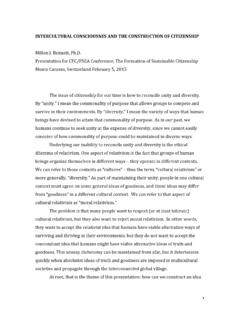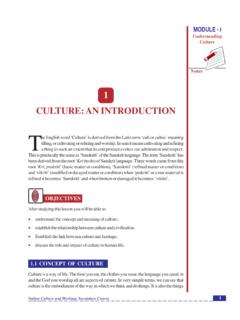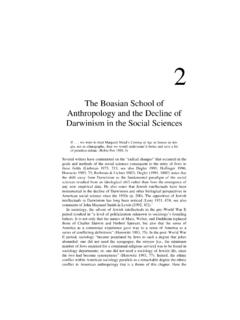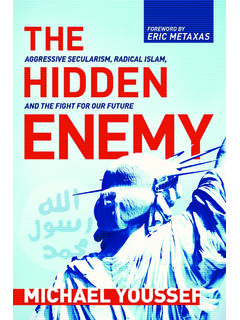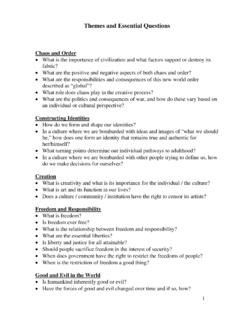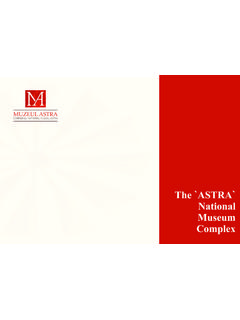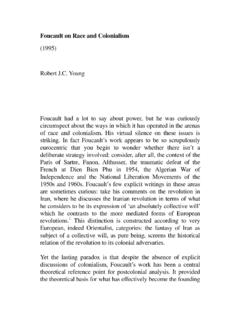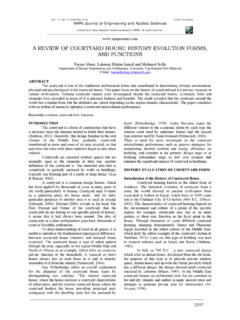Transcription of BECOMING INTERCULTURALLY COMPETENT
1 INTERCULTURAL DEVELOPMENT RESEARCH INSTITUTE. USA: 6203 Rosebay Drive Hillsboro, Oregon 97124 +1 503-268-1025. Italy: Via Francesco Arese 16, 20159 Milano +39 02 66 800 486. BECOMING INTERCULTURALLY COMPETENT . Final Draft 1/8/04: Bennett, M. J. (2004). BECOMING INTERCULTURALLY COMPETENT . In Wurzel (Ed.) Toward multiculturalism: A reader in multicultural education. Newton, MA: Intercultural Resource Corporation. Milton J. Bennett, Executive Director, The Intercultural Development Research Institute Director, The Intercultural Communication Institute Portland, Oregon USA Discovering the Sequence of Development After years of observing all kinds of people dealing (or not) with cross-cultural situations, I decided to try to make sense of what was happening to them.
2 I wanted to explain why some people seemed to get a lot better at communicating across cultural boundaries while other people didn't improve at all, and I thought that if I were able to explain why this happened, trainers and educators could do a better job of preparing people for cross-cultural encounters. The result of this work was the Developmental Model of Intercultural Sensitivity (DMIS) (M. Bennett, 1986, 1993; J. Bennett & M. Bennett, 2003, 2004). As people became more INTERCULTURALLY COMPETENT it seemed that there was a major change in the quality of their experience, which I called the move from ethnocentrism to ethnorelativism. I used the term ethnocentrism to refer to the experience of one's own culture as central to reality. By this I mean that the beliefs and behaviors that people receive in their primary socialization are unquestioned; they are experienced as just the way things are.
3 I coined the term ethnorelativism to mean the opposite of ethnocentrism the experience of one's own beliefs and behaviors as just one organization of reality among many viable possibilities. There also seemed be six distinct kinds of experience spread across the continuum from ethnocentrism and ethnorelativism. The most ethnocentric experience was named the Denial of cultural difference, followed by the Defense against cultural difference. In the middle of the continuum the Minimization of cultural difference seemed to be a transition from the more virulent forms of ethnocentrism to a more benign form, leading to the ethnorelative Acceptance of cultural difference. At the heart of ethnorelativism was Adaptation to cultural difference, followed in some cases by the Integration of cultural difference into identity.
4 The sequence of these experiences became the stages of the DMIS. In general, the more ethnocentric orientations can be seen as ways of avoiding cultural difference, either by denying its existence, by raising defenses against it, or by minimizing its importance. The more ethnorelative worldviews are ways of seeking cultural difference, either by accepting its importance, by adapting perspective to take it into account, or by integrating the whole concept into a definition of identity. The Stages of Development Figure 1. Denial Defense Minimization Acceptance Adaptation Integration ETHNOCENTRISM ETHNORELATIVISM. The Ethnocentric Stages of Development As illustrated in Figure 1, the first three DMIS orientations are conceptualized as more ethnocentric, meaning that the tenants of one's own culture are experienced as central to reality in some way.
5 The default condition of a typical, monocultural primary socialization is Denial of cultural difference. This is the state in which one's own culture is experienced as the only real one that is, that the patterns of beliefs, behaviors, and values that constitute a culture are experienced as unquestionably real or true. Other cultures are either not noticed at all, or they are construed in rather vague ways. As a result, cultural difference is either not experienced at all, or it is experienced as associated with a kind of undifferentiated other such as foreigner or immigrant. In extreme cases, the people of one's own culture may be perceived to be the only real humans and other people viewed as simpler forms in the environment to be tolerated, exploited, or eliminated as necessary.
6 People with a Denial worldview generally are disinterested in cultural difference even when it is brought to their attention, although they may act aggressively to avoid or eliminate a difference if it impinges on them. For example, many dominant-culture Americans were not aware of the large numbers of Latinos who shared their communities until the last census figures were released. In some cases in which I have consulted, a sudden increase in the Latino population has been met with angry bewilderment from Anglos, who ask, How could such a thing have happened to our community? And of course, Americans are familiar with the phenomenon of white flight the avoidance reaction of dominant-culture European Americans to the introduction of African Americans or other people of color to previously all-white neighborhoods.
7 I would like to stress that Denial is not particularly American. In my observation, a Denial worldview in Germans, Italians, or Japanese yields a similar reaction to immigrants. Nor is this worldview restricted to dominant-culture folks in American or other societies. Even if they are forced by economic necessity into interaction with the dominant culture, people of non-dominant groups with a Denial worldview remain unable to recognize the cultural dimension of the interaction. For instance, as many African Americans as European Americans seem to be surprised at cultural differences between these groups in communication style and nonverbal behavior. This is because the Denial worldview in both groups only allows for observations within the familiar categories of race and associated constructs of deserved or undeserved inequities in political and economic power.
8 The tendency to use familiar but often simplistic or fallacious categories of race and ethnicity seems also to characterize the Denial form of dominant/non-dominant interaction in other societies. Another way a Denial worldview shows up is as an inability (and disinterest) in differentiating national cultures. For instance, Americans at this stage often cannot tell the difference between Chinese and Japanese cultures, or to distinguish among Gulf State Arabs ( Kuwaitis), Fertile Crescent Arabs ( Syrians), and Persians (in Iran). While educated Europeans or Asians are generally more knowledgeable than Americans about geopolitical issues, at Denial they seem just as likely to neglect these kinds of cultural differences . For example, Asian sojourners seem to be at least as inclined as Americans to maintain the exclusive company of their compatriots, and many Europeans seem oblivious to the cultural factors that frequently underlie political differences .
9 The main issue to be resolved at Denial is the tendency to avoid noticing or confronting cultural difference. People here need to attend to the simple existence of other cultures, both globally and domestically. Those who are facilitating this initial recognition (teachers, trainers, friends) need to understand that Denial is not a refusal to confront the facts. It is instead an inability to make the perceptual distinctions that allow cultural facts to be recognized. When facilitators fail to understand the experience of Denial, they are likely to present cultural information in too-complex ways and to become impatient at the aggressive ignorance often displayed at this stage. The resolution of Denial issues allows the creation of simple categories for particular cultures, which sets up the conditions for the experience of Defense.
10 Defense against cultural difference is the state in which one's own culture (or an adopted culture) is experienced as the only viable one the most evolved form of civilization, or at least the only good way to live. People at Defense have become more adept at discriminating difference, so they experience cultural differences as more real than do people at Denial. But the Defense worldview structure is not sufficiently complex to generate an equally human experience of the other. While the cultural differences experienced by people with a Defense perspective are stereotypical, they nevertheless seem real by comparison to the Denial condition. Consequently, people at Defense are more openly threatened by cultural differences than are people in a state of Denial.

